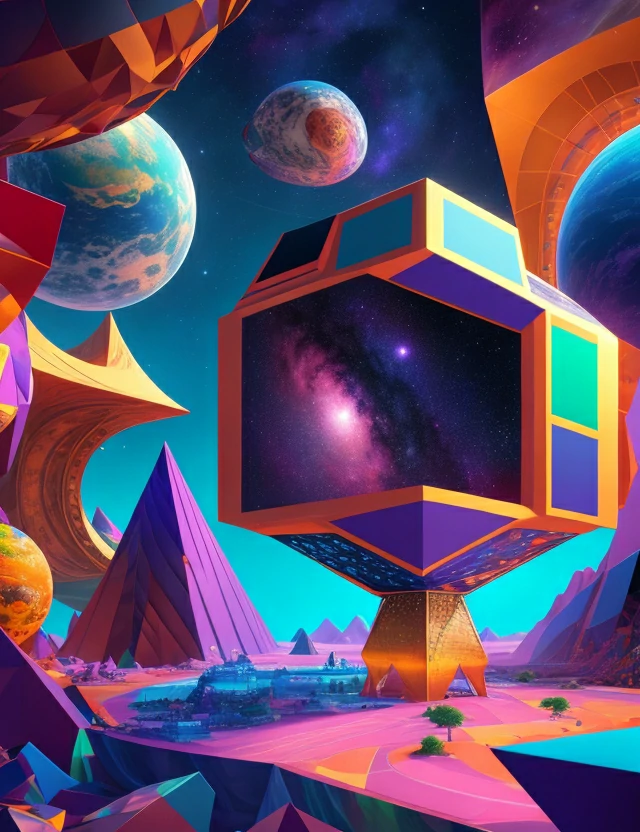I have always been fascinated by the idea that the structure of our brain is the archetype (complex macrostructures composed of microstructures made up of chemical compounds, molecules, atoms and elementary particles, all the product of countless permutations selected over billions of years to arrive at this point) of many of the things that surround us such as the internet, AI, our cities, our countries, our language, our world and why not our universe; this could be the beginning of the theory of everything, so longed for by scientists, physicists, mathematicians, philosophers, prophets,…
I have found some very interesting information that follows this path and I am going to share it with you.
Before I begin, I must speak of Anaxagoras, who gave a great impulse to the investigation of nature based on experience, memory and technique. To him are attributed the rational explanations of eclipses and the breathing of fish, as well as research on the anatomy of the brain. Anaxagoras expounded his philosophy in his work Peri physeos (On Nature), but only fragments of his books have survived.
To explain the plurality of objects in the world endowed with different qualities, he resorts to the assumption that all things would be formed by elementary particles, which he calls by the name of «seeds» (spermata, in Greek).
Anaxagoras conceives the nous as the origin of the universe and the cause of existence, but at the same time he tries to explain himself and calls to find the everyday things of what happens in the world. On the other hand, he made part of his explanation of reality the concept of nous, intelligence, which, being an extremely subtle «fluid», filters through the nooks and crannies of matter, which it animates with its movement. The nous penetrates some things and not others, thus explaining, following Anaxagoras, the existence of animate and inert objects. And he was the first philosopher to affirm that the Universe was designed and realized by the rational power of an infinite mind.
A growing number of scientists claim that the universe may be a giant neural network, a living entity capable of learning and evolving. This idea is gaining traction and has the potential to redefine our understanding of the cosmos, putting an end to the traditional conception of the universe as a vast, seemingly inert space where energy and matter interact in a chaotic dance governed by physical and quantum laws that we cannot yet fully explain. In fact, the theory has the potential to unify Einstein’s relativity and quantum mechanics.
This theory was proposed by theoretical physicist and expert in cosmology, quantum gravity, quantum computing and artificial intelligence Vitaly Vanchurin; he argues that the universe may be a neural network, a system of interconnected nodes similar to the neural networks in the human brain; if the universe is considered as a neural network, one can unify Einstein’s theory of general relativity describing large-scale gravity with quantum mechanics describing the behavior of particles at the subatomic scale because these two behaviors are perfectly compatible within neural networks.
In that sense we have to talk about the theoretical physicist Sabine Hossenfelder, who supports the idea that the universe may be a thinking entity. According to her, there is a growing body of scientific evidence pointing to an interconnection between cosmic nodes. Hossenfelder starts from evidence published in a peer-reviewed study in Frontiers in Physics. According to that study, «although the relevant physical interactions in the brain connectome and cosmic filaments are completely different, their observation through microscopic and telescopic techniques has captured a similar morphology.» The cosmic web and the neuron network are similar mechanisms that could allow the universe to behave like a neural network.
He adds that this changes when we take into account our observations on quantum mechanics and particle entanglement. This, he says, could be the instantaneous method of transmitting information between nodes in the cosmos. «Quantum physics tells us that reality is not as solid as it seems,» Hossenfelder notes, adding that particles can exist in several places at the same time and change each other on the spot; this suggests that the universe could behave as a kind of organism, a cosmic computer capable of transmitting information, learning and evolving. These claims can also be anchored to recent observations and theory that speak of quantum foam as the basic fabric of the universe, pointing out that all that exists are but manifestations of the quantum whole that is the universe.
A study published in Science describes how jets of particles and radiation emitted by black holes appear to line up with the cosmic web in an inexplicable way. According to the article, «the alignment of the jets suggests that the black holes that feed the quasars mysteriously have the same rotation axis as their neighbors, despite being billions of light-years away.»
No one can explain how quasars billions of light-years away are perfectly aligned and synchronized.
These findings indicate that the universe may be much more complex and dynamic than previously thought. Obviously, much work remains to be done for this theory to materialize into solid formulations.
And as a conclusion, if the universe is a thought, then we are not the only thinking entities in it. We are, in a sense, thoughts within a thought. It perfectly satisfies our observations about the recursion present in immediate nature: everything seems to be part of a complex system whose structures at various levels, as in a fractal, repeat themselves over and over again from the cosmic scale to the nanoscopic scale, passing through our naked eye empirical observation of everything around us.
And to quote Sagan: «We are the means for the cosmos to know itself«.
